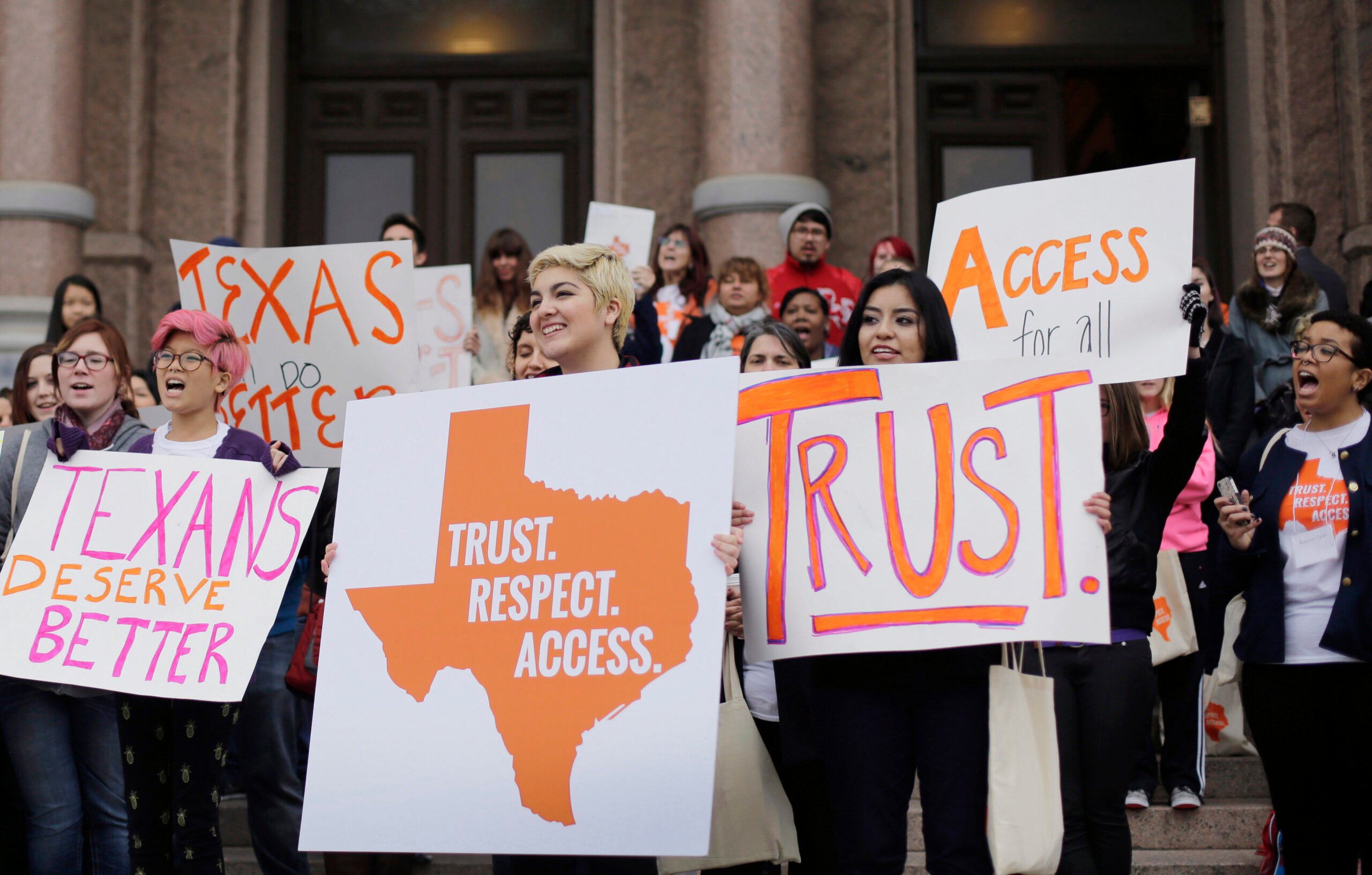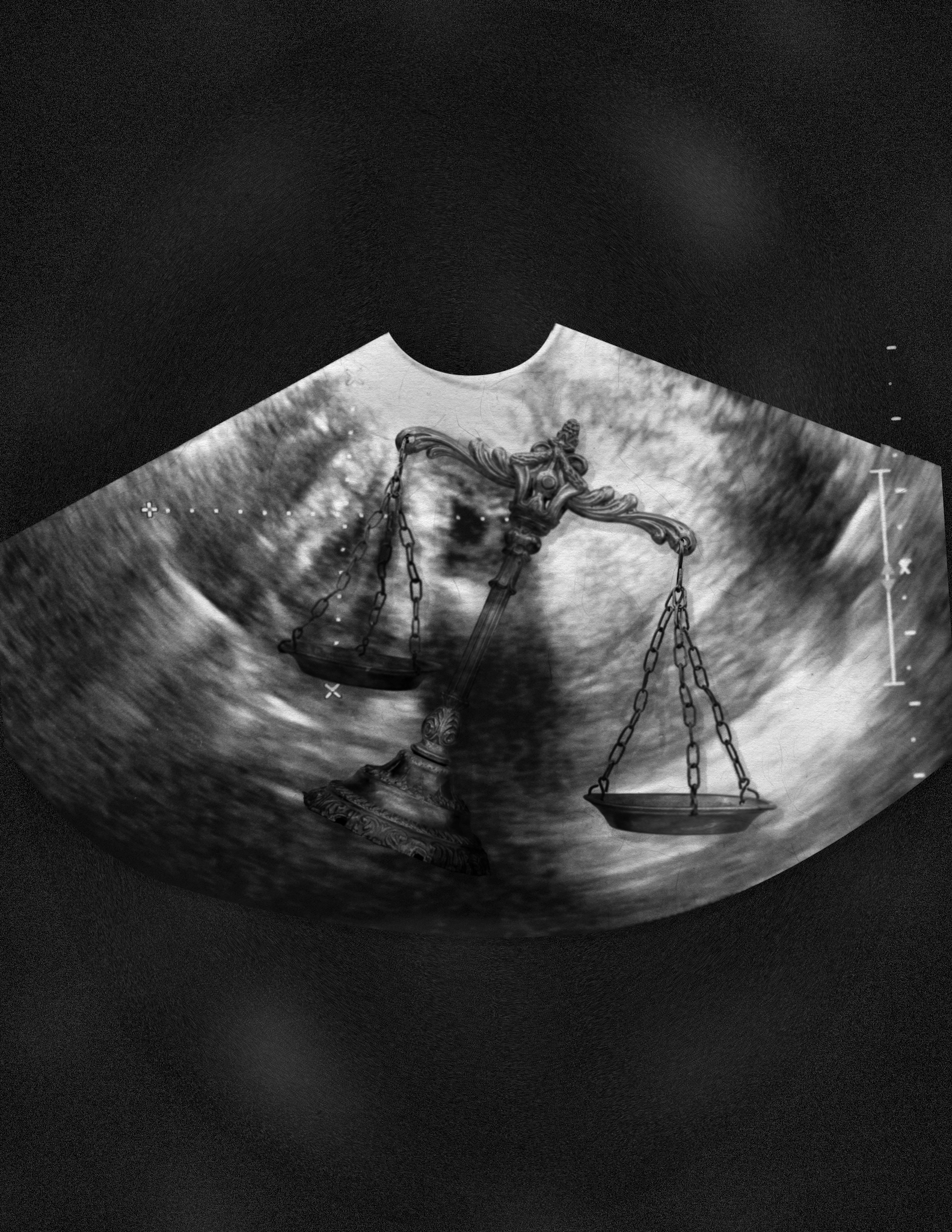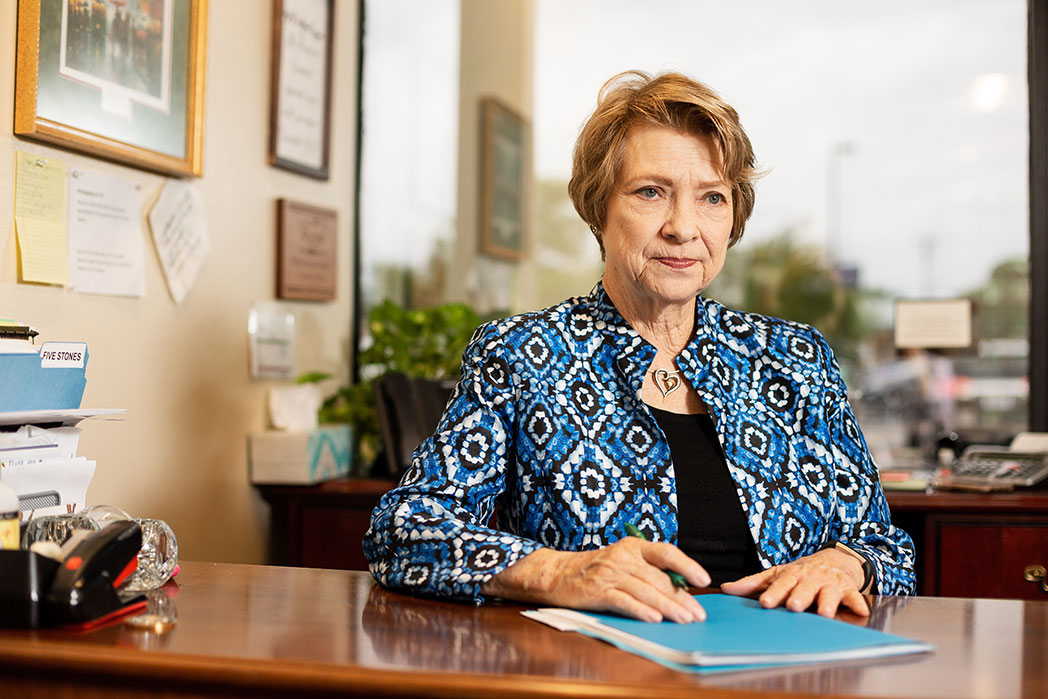
Reckoning With Rosie
Thirty-eight years ago, a young woman in McAllen died of an illegal abortion. Today her story is more relevant than ever.

A version of this story ran in the November 2015 issue.
In 1978, a young woman in McAllen died of an illegal abortion. Today her story is more relevant than ever.
by Alexa Garcia-Ditta
November 3, 2015
On a June afternoon in McAllen in 1978, Diana Rivera, posing as a young pregnant woman, walked into the home of a local midwife. At Rivera’s side was a female friend, who was wearing a small, concealed microphone. Outside, two older women, both abortion rights activists and writers, waited in a parked station wagon with a Dallas television crew, listening in. The day before, Rivera, a self-possessed college student and single mother, had arranged to meet the midwife, Maria Pineda, middle aged with some 12 years in practice. Rivera told her that she needed to get an abortion quickly, before her father found out, and couldn’t afford an OB-GYN. Pineda, who was licensed to deliver babies but not perform abortions, responded that she could do the procedure for $125, and they agreed to meet at 1:30 p.m. the next day.
The price was key. Although abortion was legalized in 1973, the 1976 Hyde Amendment had banned the use of Medicaid for the procedure. Without the federally subsidized insurance, many women couldn’t afford the $230 that McAllen OB-GYNs typically charged. The amendment — calculated to keep women from getting abortions in the same way that Texas’ recent abortion laws have been engineered — instead forced them to seek less expensive options.
Once Rivera and the friend were inside the home, a worn wooden house, the midwife took them into a separate room and locked the door. There was a bed and a cot, and Rivera spotted medical instruments sitting in a jar of dirty water. By then, she was crying out of nervousness and anger.
Nine months earlier, her best friend, Rosie Jimenez, had been treated by Pineda with disastrous consequences. For Rivera, this amateur sting operation was a way to bring down harsh repercussions on the midwife. In Rivera’s perfect world, the midwife would never practice again.
“I was crying, and shaking,” Rivera says. “She sat in this chair, she talked to that woman, and she saw those instruments, and it didn’t matter. She went through with it.”
Stalling for time, Rivera asked Pineda to tell her about the procedure. Pineda went into her stock explanation, describing the instruments as well as the process: She would insert a thin rubber hose, and later, Rivera would bleed. “I remember that red rubber hose,” Rivera says. “It was filthy.”
Pineda told Rivera to remove her clothes and lie on the bed. With those words, one of the women listening to the conversation from the station wagon ran to call the McAllen police.
When Rivera and Jimenez met in secretarial school in 1973, they quickly became close friends. Rivera, who towered over her petite classmate, found Jimenez’s running commentary during their typing class funny as hell. “I would start laughing, and of course the teacher would say, ‘You two, settle down,’” Rivera says, remembering her friend’s infectious giggle. “Can you imagine if we had been in high school together?”
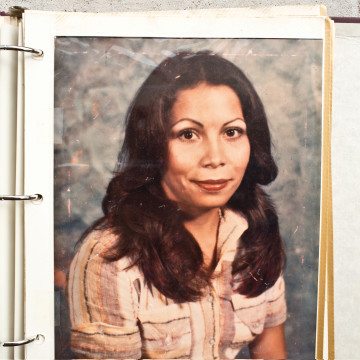
The two women had a lot in common. Both were Mexican-American, children of migrant farm workers whose families struggled with poverty; Jimenez was one of 12 siblings. They were single mothers on welfare in socially conservative McAllen, determined to improve their lives and devoted to their kids. In 1974, they talked each other into enrolling at McAllen’s Pan American University. Jimenez wanted to become a special education teacher, Rivera a lawyer. With their kids in hand, they moved into adjacent apartments on Hibiscus Avenue on McAllen’s north side. Jimenez’s daughter, Monique, was a baby; Rivera’s son, Anthony, a few years older.
Over the next years, they helped each other manage grueling schedules: study, part-time jobs, raising children, cleaning houses on weekends to pick up extra money. In the mornings, Jimenez would knock on the wall between the apartments, calling to Rivera, “Get up, we’re leaving.” By then, Anthony was showing early signs of autism, and Jimenez helped Rivera care for him. “She loved children, and she really felt like she could make a difference,” Rivera says.
Parts of Jimenez’s life had been tumultuous — in February 1977 she had her second abortion — but she was working toward a steadier existence. She had a longtime boyfriend, Jesse, who was in prison, and they planned to marry. “She was going to college to have a better life, that was her goal,” says her daughter Monique, now 42. “I know that she saw my grandparents struggle, and she wanted to provide me with a better life.”
Without Medicaid, OB-GYNs were too expensive for some women needing abortions not only in McAllen but across the nation.
In September 1977, Jimenez discovered she was pregnant again. Rivera has described it as a last straw, too much for Jimenez, despite her natural optimism. Intent on finishing college, worried about caring for another child, she decided to have an abortion, and Rivera insisted that she see a physician. If it had been a few months earlier, Jimenez could have used Medicaid to pay for one of McAllen’s OB-GYNs, whose offices spread like a fan around the McAllen General Hospital on Houston Avenue near South Main Street.
But by then, the Hyde Amendment had been in place for two months. During debate over the legislation, its author, U.S. Representative Henry Hyde, R-Illinois, told colleagues he hoped the bill would prevent anyone — “a rich woman, a middle-class woman, or a poor woman” — from having an abortion. Instead, it made the terrain more dangerous.
In the slim two-month window after the amendment took effect, complications arising from poorly conducted abortions seemed already to be increasing in McAllen. Between August and October of 1977, five women, including Jimenez, turned up at the emergency room with infections and related complications, probably from cheap illegal abortions, according to a report from the Centers for Disease Control and Prevention.
Without Medicaid, OB-GYNs were too expensive for some women needing abortions not only in McAllen but across the nation. Jimenez refused to resort to using her financial aid check; she still had two years left in school. “I said, ‘Then let’s have a fundraiser,’” Rivera says. “‘We’ll have bake sales. We’ll come up with the money.’” Jimenez was noncommittal, and a few days later, Rivera left town to visit her mother in Weslaco.
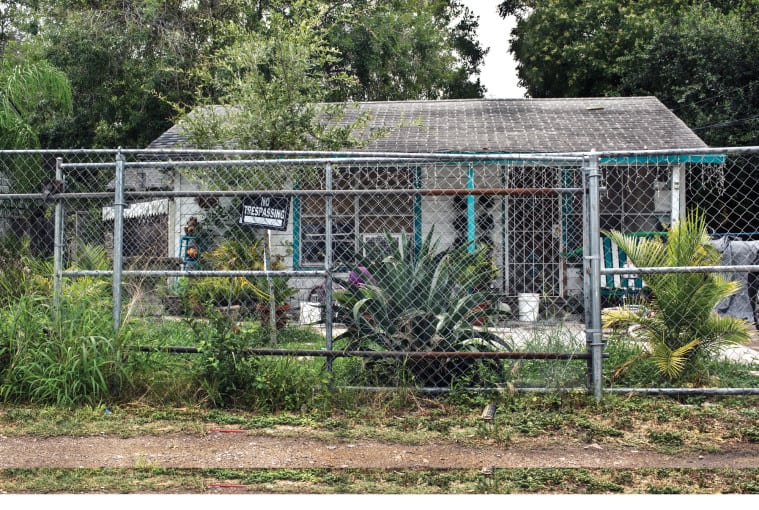
On the night of September 26, while Rivera was still gone, Jimenez developed a fever and began hemorrhaging and vomiting. She’d contracted a bacterial infection in her uterus from the abortion Pineda performed the day before. The infection usually derives from feces or dirt, according to a doctor quoted in a comprehensive book on her case, Rosie: The Investigation of a Wrongful Death. Jimenez’s cousin and friends rushed her to the emergency room at McAllen General Hospital. She was given a tracheotomy to help her breathe and then a hysterectomy, according to the doctor. But the infection had spread through her body, attacking her organs, including her heart. She struggled for seven days in intensive care. On October 3, she died from organ failure at the age of 27.
Rivera didn’t find out about Jimenez’s hospitalization until she returned from Weslaco. “I guess I’m glad I didn’t get to see her,” she says. “I would’ve gone crazy.” Monique, 4 years old then, was sent to live with relatives soon after Jimenez’s death. She has one clear memory of the funeral at McAllen’s La Piedad Cemetery. “When the casket was going down … I said, ‘Where is my mommy going?’ I remember somebody was holding my hand, but I don’t remember all the faces.”
Jimenez’s death — covered by the New York Times, the Washington Post, the Los Angeles Times and ABC News — roiled the national dialogue over abortion rights. Reproductive rights organizations held candlelight vigils across the country, attracting as many as 300 people in Washington, D.C. At rallies in New York and at the U.S. Capitol, protesters decried the federal government and Congress, blaming Jimenez’s death on the cutoff of Medicaid funds. A New York Times editorial called Jimenez the “first victim” of the Hyde Amendment. Among abortion rights activists — even, to some degree, within the U.S. public at large — she became a symbol of the destructive power of the bill.
Though abortion itself is now extraordinarily safe, it’s also become, if anything, harder to get than it was in the 1970s, especially in Texas.
In November 1977, the CDC launched an investigation into Jimenez’s death, and its findings set off a spate of skeptical news articles. The CDC reported, inaccurately, that Jimenez had “obtained an induced abortion in Mexico.” Subsequent media reports questioned assertions that she was driven to seek an abortion in a nonmedical environment because she couldn’t afford an OB-GYN, suggesting instead that she was trying to hide her pregnancy from her family. Even people in health care who treated women like Jimenez made comments rife with the stigma attached to abortion. A Washington Post article quoted the director of a McAllen Planned Parenthood clinic: “Who knows why someone goes to Mexico for an abortion?” she asked. “Is it money? Or is it that they don’t want anyone to know about it?’”
In the years since, as the facts about Jimenez’s case have emerged, her death has become a powerful reminder of what happens when abortion becomes inaccessible. Though abortion itself is now extraordinarily safe, it’s also become, if anything, harder to get than it was in the 1970s, especially in Texas.
Under legislation passed in 2011, Texas women must get ultrasounds at least 24 hours before receiving an abortion and receive so-called “woman’s right to know” counseling, which is based on outdated, scientifically unsound research. Under Texas’ 2013 omnibus abortion bill, clinic doctors must have admitting privileges at hospitals, and the clinics themselves must operate as ambulatory surgical centers.
More than half of Texas’ 41 abortion clinics have closed, and the wait times for women needing abortions have increased to up to 20 days. Especially in far reaches of the state, where there are fewer clinics, women must travel long distances for the procedure, sometimes hundreds of miles. Only one clinic remains open, in McAllen, to serve Texans living in the lower Rio Grande Valley. Without it, patients would be forced to travel nearly 250 miles to San Antonio. If the McAllen clinic closes, undocumented women in particular will face a perilous situation, because going to San Antonio would require passing through an internal immigration checkpoint. Their choice would be stark: risk deportation or opt for an illegal abortion.
And again, Texas has taken center stage in the national debate, this time becoming a testing ground for restrictive abortion laws, some of which have subsequently been enacted elsewhere. The omnibus abortion law, called the most onerous in the country, is expected to head to the U.S. Supreme Court for a decision that will determine how, or whether, states can legislate access to abortions. Meanwhile, reproductive rights activists worry that the restrictive landscape is forcing women to choose unsafe options again.
Rivera couldn’t bear living in the Hibiscus apartment after Jimenez was gone. Within a few months, she started looking for a new place to live, and in the middle of her search, she got a call from Ellen Frankfort, a New York journalist and feminist author who wrote for the Village Voice and Ms. Magazine. Amid the swirl of conflicting stories about Jimenez’s death, Frankfort decided to find out what happened and learn more about Jimenez as a person. She hopped on a plane for McAllen.
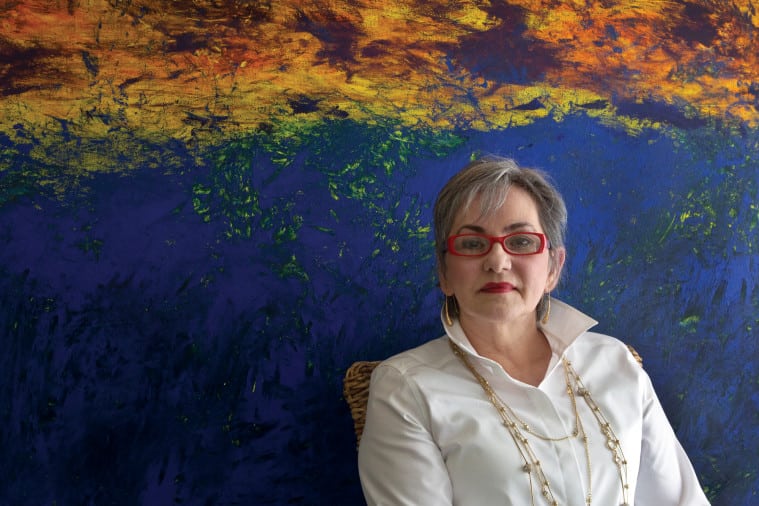
Over several months in 1978, Frankfort pieced together the story with help from Rivera and Jimenez’s relatives and other friends. Jimenez did go to Mexico, they told Frankfort. There, she received a hormone injection, which she hoped would trigger a miscarriage but didn’t. After returning to McAllen, Jimenez turned to a friend, who told her about Pineda. Frankfort also learned that Jimenez had relied on doctors for her previous abortions, which were covered by Medicaid. Frankfort’s reporting became the basis for Rosie: The Investigation of a Wrongful Death, which she co-authored with Frances Kissling, then director of the National Abortion Federation.
But nothing happened, even after the CDC updated its report using the same information about the McAllen midwife that Jimenez’s friends and relatives gave to Frankfort. Despite the evidence piling up against Pineda, she was still practicing, as far as Frankfort knew. Frankfort decided she had to act, and Rivera agreed to help.
Frankfort, Kissling, Rivera and other friends of Jimenez came up with a detailed plan. They even marked the bills Rivera would use to pay Pineda. As Rivera stood in the bedroom of Pineda’s house, the midwife told her: If there were complications, she was to return rather than see a doctor. If she ended up at a physician’s office, she was to say she got the abortion in Mexico — not McAllen.
When the midwife told Rivera to remove her clothes, Kissling ran to a phone booth and called the McAllen police. Pineda tried to block them from coming in the door when they arrived. She hid the rubber hose in her bra and pushed Rivera, as well as her medical instruments, into the bathroom.
Police arrested Pineda on the spot, but Frankfort, Kissling and Rivera were also hauled off to the police station as co-conspirators in an illegal abortion. The women were questioned for hours before being released. “When I was sitting in the police station, it just hit me all at once,” Rivera says. “I started bawling. I cried and cried. I said, ‘Rosie, we got her. We got her, Rosie.’”
When Pineda was finally charged, though, the penalties were disappointing. According to police records, she was convicted of practicing medicine without a license, a Class A misdemeanor in Texas. She was sentenced to three days in jail and charged a $100 fine.
“Every time I think about it, it still hurts,” says Rivera, now 63, retired from her career as an attorney and living again in McAllen. Her home is decorated with her son’s paintings and washed by sunlight that pours through big windows. It’s similar to what she and Jimenez hoped they might have. “If she were still around,” Rivera says, “she would be enjoying everything that I am enjoying.”
After Jimenez’s death, nonprofit organizations stepped in to help fill the financial gap that the Hyde Amendment created. The first abortion fund, established in 1978 in Central Texas in Jimenez’s honor, provided financial assistance to low-income Texans. Dozens of similar funds have cropped up in the state and the nation, giving women some recourse despite the slew of regulations aimed at reducing access to abortions. Planned Parenthood and other providers, too, addressed expense. To meet the needs of lower-income women, the organizations in some cases use sliding scales for abortion prices.
Monique Jimenez, as she was growing up, knew nothing about the wave that her mother generated. Her relatives told her little about her mother’s life, with the exception of a few anecdotes: She liked classic rock music, spent summers lying on the beach in South Texas and traveled throughout Mexico. They said nothing about her death. Finally, when Monique was 19, her aunt gave her a copy of Frankfort’s book.
In adulthood, Monique has carved out a place in her life for her mother. She put together a photo album, using pictures she found in a basket in her grandmother’s house. As I sit with her in her airy, high-ceilinged duplex in Houston, we flip through the album’s yellowing pages. In the photos, Rosie is a 20-something woman with shoulder-length hair, dark eyes and a wide smile. She’s dressed in bright florals and the high-waisted pants of the 1970s. Glued into the album is the invitation for Monique’s first birthday party. Another photo shows Monique, a round-faced toddler, eating cake with her hands.
When Monique Jimenez picked a date for her wedding, she chose her mother’s birthday, August 5. “It meant a lot to me to do it on that day,” she says. “I always feel like when someone passes away, people forget about them. I don’t want it to be like that.”
She’s followed a path similar to the one her mother hoped to take. She works in the mental health field, helping people with bipolar disorder, depression and schizophrenia.“I feel like I’m still a lot like her in some sense,” she says. When she picked a date for her wedding, she chose her mother’s birthday, August 5. “It meant a lot to me to do it on that day,” she says. “I always feel like when someone passes away, people forget about them. I don’t want it to be like that.”
On the October 3 anniversary of Jimenez’s death, when reproductive rights groups renew their call for improving access to abortion, Monique reflects on what her relationship with Rosie would be like if she’d lived. Rivera lights a candle for her at St. Jude Catholic Church in Pharr. “People ask me, ‘How can you be for abortion when your mom passed away?’ Monique says. “Well, because my mom was choosing a better life. It would’ve been such a big struggle to have another child. She was trying to do better for us.”
